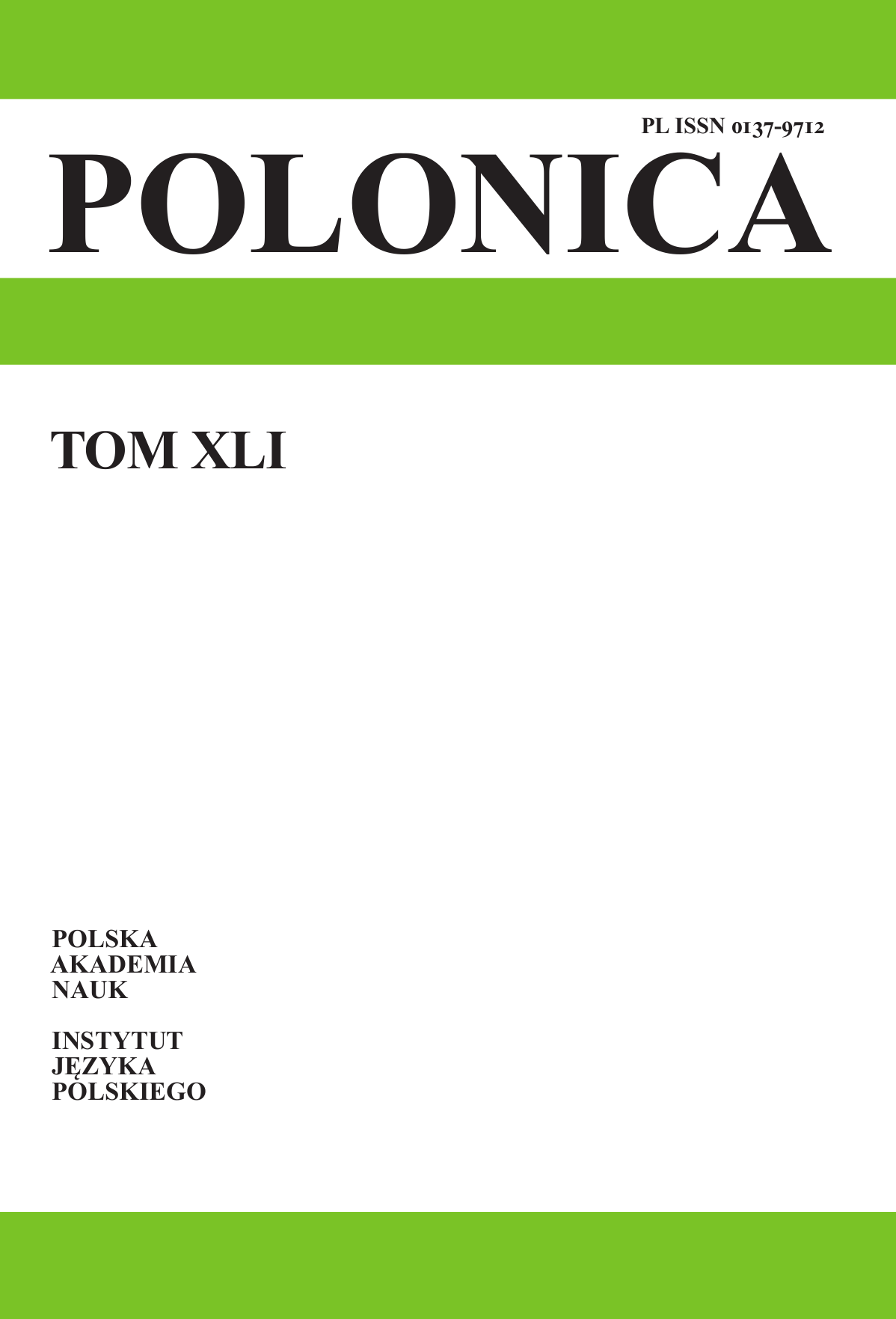Abstract
The purpose of this article is to present a possible etymology of the Polish word for ‛dog’ as a continuation of the Proto-Indo-European form. The majority of the hypotheses postulated so far concerning the origin of this lexeme considers it to be a Slavic innovation which superseded the inherited Proto-Indo-European word. The author argues that current models of Indo-European nominal derivation permit a connection of the Slavic word with the Proto-Indo-European forms for ‛dog’ and ‛cattle’.
References
Arumaa, P. (1976). Urslavische Grammatik. Cz. II. Konsonantismus. Heidelberg: Carl Winter Universitätsverlag.
Balles, I. (1997). Griechisch ἄφ(ε)νος ‛Reichtum’. Historische Sprachforschung, 110, 215–232.
Bańkowski, A. (2000). Etymologiczny słownik języka polskiego. Warszawa: PWN.
Bezlaj, F. (1995). Etimološki slovar slovenskega jezika (t. 3, P-S). Ljubljana: Izdala Slovenska Akademija Znanosti in Umetnosti.
Boryś, W. (2005). Słownik etymologiczny języka polskiego. Kraków: Wydawnictwo Literackie.
Brückner, A. (1927). Słownik etymologiczny języka polskiego. Kraków: KSW.
Buck, C.D. (1949). A Dictionary of Selected Synonyms in the Principal Indo-European Languages. Chicago: University of Chicago Press.
Derksen, R. (2008). Etymological Dictionary of the Slavic Inherited Lexicon. Leiden–Boston: Brill.
Długosz-Kurczabowa, K. (2008). Wielki słownik etymologiczno-historyczny języka polskiego. Warszawa: PWN
Gąsiorowski, P. (2006). The etymology of Old English docga. Indogermanische Forschungen, 111, 275–284. DOI: doi.org/10.15159783110186505.275
Hamp, E. (1980). IE. *( ) k’uon ‛dog’. Indogermanische Forschungen, em>85, 35–42. DOI: doi.org/10.1515/9783110243277.35
Hoffmann, K. (1955). Ein grundsprachliches Possessivsuffix. Münchener Studien zur Sprachwissenschaft, 6, 35–40.
Höfler, S. (2015). Denominale Sekundärderivation im Indogermanischen: Eine Ochsentour. Münchener Studien zur Sprachwissenschaft, 69(2), 219–243.
Králik, L. (2015). Stručný etymologický slovník slovenčiny. Bratislava: Veda.
Kroonen, G. (2013). Etymological Dictionary of Proto-Germanic. Leiden-Boston: Brill
Machek, V. (1957). Etymologický slovník jazyka českého. Praha: Nakladatelství C̆ eskoslovenské akademie věd.
Mańczak, W. (2017). Polski słownik etymologiczny. Kraków: PAU.
Nussbaum, A. (1986). Head and Horn in Indo-European. Berlin–New York: Mouton–De Gruyter.
Onions, C.T. (red.). (1966). The Oxford Dictionary of English Etymology. Oxford: Clarendon Press.
Osthoff, H. (1901). Etymologische Parerga. Leipzig: Verlag von Sb. Hirzel.
Rejzek, J. (2015). Český etymologický slovník. Praha: Leda.
Schindler, J. (1984). Einiges über indogermanische o-Stämme. [Nieopublikowany handout z wystąpienia w Wiedniu 04.12.1984].
Skok, P. (1973). Etimologijski rječnik hrvatskoga ili sprpskoga jezika. Zagreb: Jugoslavenska Akademija Znanosti i Umjetnosti.
Smoczyński, W. (2007). Słownik etymologiczny języka litewskiego. Wilno: Wydawnictwo Uniwersytetu Wileńskiego.
de Vaan, M. (2008). Etymological Dictionary of Latin and the Other Italic Languages. Leiden–Boston: Brill.
Vasmer, M. (1955). Russisches etymologisches Wörterbuch. Bd. II. Heidelberg: Carl Winter Universitätsverlag.
van Windekens, A. J. (1975). Les termes “chien” et “cheval” en indo-européen.Indogermanische Forschungen, 80, 62–65. DOI: doi.org/10.1515/9783110243222.62
Źródła internetowe
Snoj, M. (2016). Slovenski etimološki slovar. www.fran.si (dostęp: 30.07.2021).
Smoczyński, W. (2021). Słownik etymologiczny języka litewskiego. https://rromanes.org/pub/alii/Smoczyński W. Słownik etymologiczny języka litewskiego.pdf (dostęp: 1.05.2021).

